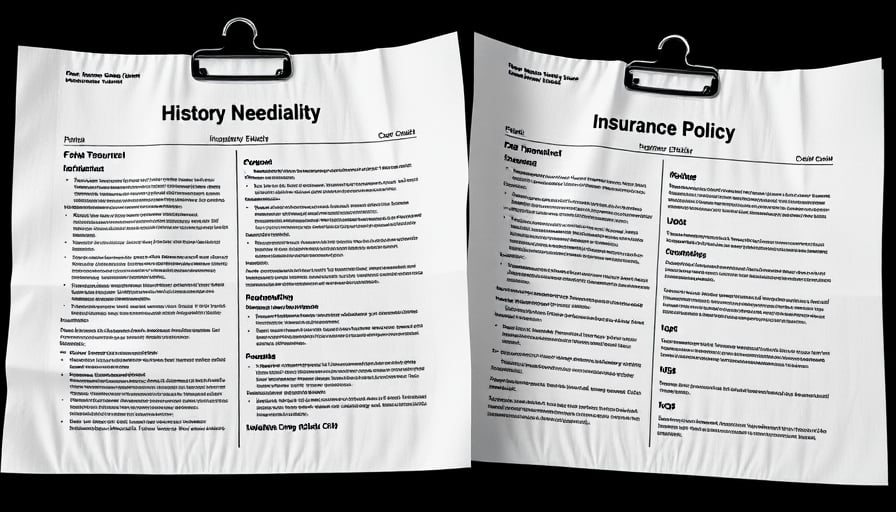Corporate News: Amcor Ltd‑Australia’s Strategic Moves in North America and Capital Structure Realignment
Amcor Ltd‑Australia (AMCO.NZ), a global packaging solutions provider listed on the Frankfurt Stock Exchange, announced a dual‑pronged strategic initiative that underscores both geographic expansion and capital restructuring. The company plans to augment its protein‑packaging capacity in North America while simultaneously executing a reverse stock split in the United States. The announcements come amid a projected acceleration in the fast‑moving consumer goods (FMCG) packaging sector, driven by heightened demand for sustainable and specialty packaging solutions.
1. Geographic Expansion: Capitalizing on the Protein Packaging Niche
1.1 Market Dynamics
The protein‑packaging sub‑segment of the FMCG market is experiencing robust growth, propelled by the rise of plant‑based proteins, protein‑enriched beverages, and the ongoing shift toward clean‑label foods. Industry forecasts estimate a compound annual growth rate (CAGR) of 6.5% for protein‑packaging solutions between 2025 and 2030. This trajectory is supported by:
- Consumer Trends: Increasing health consciousness and the global surge in plant‑based diets.
- Regulatory Pressures: Stricter environmental regulations on single‑use plastics and incentives for recyclable materials.
- Supply‑Chain Imperatives: Demand for lightweight, high‑barrier packaging to reduce transportation costs and carbon footprints.
Amcor’s decision to scale capacity in North America—a region that accounts for roughly 30% of its global revenue—aligns with these macro‑trends. The company’s existing facilities in the United States already host a diversified portfolio of food‑grade films and specialty containers. Adding protein‑focused production lines will enable Amcor to offer tailored solutions such as high‑barrier pouches, multi‑layered trays, and biodegradable polymer blends.
1.2 Competitive Landscape
Amcor faces competition from both established players (e.g., Berry Global, Sealed Air) and nimble niche firms (e.g., Solvay, Innoventive). A comparative analysis of the top five protein‑packaging providers reveals:
| Company | North America Capacity (Tons/yr) | Specialty Offering | Sustainability Rating |
|---|---|---|---|
| Amcor | 1.2 (new) + 3.0 (existing) | High‑barrier pouches | 4.1/5 |
| Berry Global | 2.5 | Multi‑layer trays | 3.8/5 |
| Sealed Air | 1.8 | Biodegradable films | 4.0/5 |
| Innoventive | 0.9 | Plant‑based polymer blends | 4.5/5 |
| Solvay | 1.1 | Composite containers | 3.9/5 |
Amcor’s incremental capacity places it competitively in the upper tier of the market, particularly with its emphasis on high‑barrier technologies that extend shelf life—an attractive attribute for protein products prone to oxidation.
1.3 Financial Implications
Projected capital expenditures for the new capacity are estimated at €15 million, with a payback period of 4.2 years based on current margin assumptions (gross margin: 32%). Sensitivity analysis indicates that a 3% drop in protein product sales volume would extend the payback to 5.1 years, underscoring the importance of maintaining robust sales pipelines in this segment.
2. Reverse Stock Split: Signals of Capital Restructuring
2.1 Mechanics and Market Perception
Amcor’s United States filing details a reverse stock split of 1‑for‑10, reducing the number of outstanding shares while proportionally increasing the share price. Historically, reverse splits are employed to:
- Improve Stock Liquidity: Avoid delisting from exchanges that impose minimum price thresholds.
- Enhance Perceived Value: Create a premium image for institutional investors.
- Simplify Capital Structure: Align the company’s capital base with its strategic direction.
Unlike a merger or acquisition, a reverse split does not alter the underlying business model or assets. However, it can serve as a signal to the market that the company is preparing for future capital‑intensive projects—such as the North American expansion.
2.2 Regulatory Context
The Securities and Exchange Commission (SEC) requires that reverse splits be conducted in accordance with Rule 15c2‑11, which mandates shareholder approval and transparent communication. Amcor’s filing meets these criteria, yet the lack of accompanying financial results leaves investors uncertain about the immediate financial impact.
2.3 Risks and Opportunities
| Risk | Opportunity |
|---|---|
| Perception of Financial Weakness: Share price may drop if investors interpret the split as a sign of distress. | Increased Investor Confidence: A higher share price can attract institutional investors seeking premium-priced stocks. |
| Dilution of Ownership: Existing shareholders may feel diluted. | Lower Cost of Capital: Improved liquidity can facilitate future equity offerings or debt refinancing. |
| Market Volatility: Post‑split trading can be erratic. | Strategic Flexibility: A more robust share price base supports potential strategic acquisitions. |
3. Broader Industry Trends and Strategic Implications
3.1 Sustainable Packaging Momentum
The global FMCG packaging industry is under mounting pressure to reduce single‑use plastic consumption. Amcor’s emphasis on sustainable materials—bioplastics, recyclable composites, and high‑barrier coatings—positions it well to capture this momentum. However, regulatory compliance remains a moving target, with the European Union’s Circular Economy Action Plan and the U.S. Biden Administration’s Plastics Reduction agenda potentially imposing new standards on packaging recyclability.
3.2 Supply‑Chain Disruptions
Recent supply‑chain disruptions, particularly in raw materials such as polyethylene and polypropylene, have increased cost volatility. Amcor’s strategic expansion may mitigate these risks by localizing production and reducing dependency on long‑haul logistics. Nevertheless, the company must monitor commodity price trends to guard against margin erosion.
3.3 Technological Innovation
Investments in process automation, digital twin modeling, and AI‑driven quality control could yield significant cost savings. While the current announcements do not detail technological upgrades, the capacity expansion offers an opportunity to integrate advanced manufacturing systems that can reduce waste and improve throughput.
4. Conclusion: A Calculated Pivot or a Cautious Posture?
Amcor Ltd‑Australia’s simultaneous expansion in North America and execution of a reverse stock split suggest a strategic pivot aimed at strengthening its foothold in a high‑growth niche while preparing its capital structure for future investment. The lack of disclosed financial results limits a full assessment of the immediate financial health, but the company’s alignment with sustainable packaging trends and the projected profitability of protein‑packaging solutions point to a potentially positive trajectory. Investors and industry watchers should monitor:
- Revenue Realization: Whether protein‑packaging sales materialize as projected.
- Cost Management: Effectiveness in controlling the €15 million CAPEX.
- Regulatory Developments: Impact of evolving sustainability mandates on Amcor’s product portfolio.
Ultimately, Amcor’s actions underscore the importance of a multi‑dimensional strategy that balances expansion, capital structure optimization, and responsiveness to industry‑wide sustainability imperatives.




